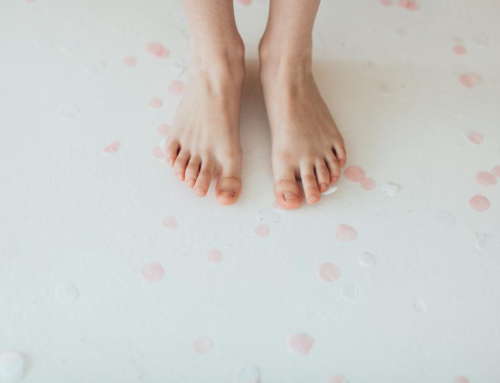Types of nail fungus infections can vary. Nail fungus, also known as Onychomycosis, is usually caused by dermatophytes. It is a type of fungus that causes an athlete’s foot, jock itch, and ringworm. When the nail is infected, it can be deformed and discolored. Nail fungus is a general term for this infection but they can all look different. There are different degrees of severity, and there are different types of fungal nail infections. The names of different types are named after the area where the infection starts.
Types of Fungal Nail Infection:
- Distal Subungual Onychomycosis (DSO) – This is the most common type of fungal nail infection. The fungus infects the skin under the edge of the nail. It travels further and infects the nail bed and turns the nail white or yellow. As the nail gets worse, the nail becomes brittle and can split or separate from the skin. The nail also becomes thickened and pieces of skin and nail fragments called debris build up under the nail.
- White Superficial Onychomycosis (WSO) – This is the second most common type of fungal nail infection. It affects the top layer of the nail, initially forming white spots on the surface. As it gets worse, it can affect the entire surface of the nail. The nail does not thicken or separate from the skin. The top of the nail becomes covered with chalky powder due to the infection.
- Proximal Subungual Onychomycosis (PSO) – This is another type that is caused by dermatophytes and is more common in people infected with HIV(Human Immunodeficiency Virus). It affects the base of the nail and may thicken the skin next to it, which may separate from the nail. The nail may become white and opaque.
- Candida Onychomycosis – Candida is a type of yeast causing yeast infection of the nail. It is not very common, but it usually affects the fingernails. It can cause the nail to separate from the nail bed. The nail may be deformed or thicker than normal and turn into a different color(white, green, or brownish).
If you have any of these symptoms. Feel free to contact us to schedule a free consultation with one of our doctors. Or click here to learn about treatment options for fungal nail infections
Laser Treatment for Nail Fungus
As you can see, tips for healthy feet without nail fungus can be easy to find. If you have caught nail fungus, it can be easily treated using the FDA-approved PinPointe laser, which typically only takes on treatment. Other treatments like topical solutions and oral medication are not as effective. Topical solutions have a very low cure rate. This is because the solution does not penetrate all the way through the nail bed. This is because it can lead to liver toxicity. You would need to have consistent blood tests throughout the course of taking the medication.
Our nail doctor in San Diego, CA recommends this treatment for toenail fungus. The PinPointe Laser treatment has the highest cure rate in the market. It has no side effects and no recovery period. As a result, you can go about your daily activities right after the treatment. Also, there’s no pain.
If you have any signs of nail fungus, call us at (800) 672-0625 our San Diego, CA location, or visit our website for more information on our doctors at one of our over 150 locations.



